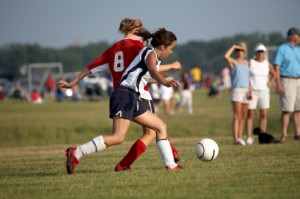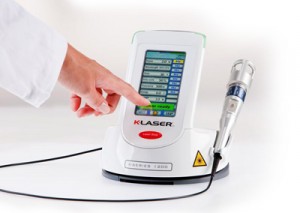 What is Laser Therapy?
What is Laser Therapy?
Laser Therapy or “photobiomodulation”, is the use of specific wavelengths of light (red and near-infrared) to create therapeutic effects. These effects include improving healing time, pain reduction, increased circulation and decreased swelling. Laser Therapy has been widely utilized in Europe by physical therapists, nurses and doctors as far back as the 1070’s.
Cellular Effects of Laser Therapy
During Laser Therapy the infrared laser light interacts with tissues at the cellular level and metabolic activity increases within the cell, improving the transport of nutrients across the cell membrane. This initiates the production of cellular energy ( ATP) that leads to a cascade of beneficial effects, increasing cellular function and health.
Laser Therapeutic Effects
During each painless treatment laser energy increases circulation, drawing water, oxygen and nutrients to the damaged area. This creates an optimal healing environment that reduces inflammation, swelling muscle spasms, stiffness and pain. As the injured area returns to normal, function is restored and pain is relieved.
Patient benefits of Laser Therapy
Laser Therapy is proven to bio-stimulate tissue repair and growth. The Laser accelerates the healing process and decreases inflammation, pain and scar tissue formation. In the management of chronic pain Class IV Laser Therapy can provide dramatic results , is non-addictive and virtually free of side effects.
Numerous studies show that Class IV Laser Therapy can help with:
Tendinopathies | Osteoarthritis | Carpal Tunnel Syndrome | Myofascial Trigger Points | Tennis Elbow | Fibromyalgia | Burns | Ligament Sprains | Diabetic Neuropathy | Muscle Strains | Repetitive Stress Injuries | Plantar Fasciitis | Sports Injuries | Shoulder, Back & Knee Pain | Post-Traumatic Injury
Can it be used in conjunction with other forms of treatment?
Yes, Laser therapy is often used with other forms of treatment, including physiotherapy, chiropractic, massage therapy, acupuncture and even following surgery. Other healing modalities are complementary and can be used with laser to increase the effectiveness of the treatment.
Please contact our health care practitioners to find out how a Class IV Laser can help you feel better, faster. The K- Laser, Class IV Laser Therapy is Drug free, surgery free and pain free!
 I am excited to launch this years offering of not just one, but two Ignite Retreats!
I am excited to launch this years offering of not just one, but two Ignite Retreats!








